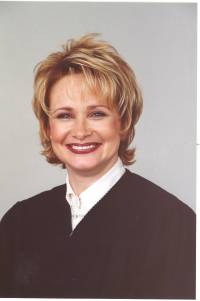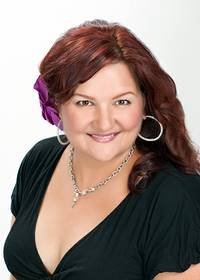Editor's note: This story was originally published in Health Care Quarterly, magazine about Southern Nevada's health care industry. Stories in Health Care Quarterly were submitted by doctors and their affiliates.
When it comes to child sex trafficking, Las Vegas is among the most vulnerable cities in the United States. Under the buzz of neon lights, high-profile conventions, labyrinthine casinos and sexy events, criminals plot and prey on their young victims. Given Las Vegas’ ideal environment— a bustling honeycomb of illicit opportunity — it’s hardly a surprise that Southern Nevada’s population center has always topped the FBI’s list for child prostitution. Add to that the fact that the Las Vegas Metro has investigated about 2,200 children exploited through sex trafficking since 1994, and it’s hard to deny the issue is gravely serious.
It is estimated that 293,000 U.S. children are at risk of commercial sexual exploitation. The Nevada-based National Council of Juvenile and Family Court Judges (NCJFCJ) understands the magnitude of this issue, and has made it a priority — with federal backing — to help judges identify victims and children at risk. NCJFCJ relies on allies like the UNLV Boyd School of Law, a law school member of NCJFCJ, to bridge the gap and combat this growing problem. It’s a crucial partnership, considering Nevada is one of the top four states for trafficking.
Child sex trafficking activity is on the rise, as criminals relish in its profitability and the low likelihood of severe punishment. Criminals have discovered it is more profitable and less risky to sell people than, for example, drugs. Buyers are very rarely charged or convicted for solicitation or pandering, let alone statutory rape or child endangerment. Demand is high because a sale can be brokered quickly, easily and anonymously online. Though once regarded primarily as an international issue, the FBI reports that between 2008-10, 83 percent of sex trafficking victims found within the United States were U.S. citizens.
Theresa Bohannan, research associate for NCJFCJ, explained that while trafficking is commonly perceived as a legal matter, it is also a public and mental health issue. Because victims of trafficking are at a higher risk for dental diseases, malnutrition, and communicable and sexually transmitted diseases like HIV, it’s important for health care professionals to be vigilant. This responsibility extends to school-based and local health clinics, in addition to emergency rooms.
“In addition to the burden of disease, there are comorbidities associated with sexual exploitation, such as post-traumatic stress disorder, depression, substance abuse and behavioral disorders,” said Bohannan, who noted that health care professionals may be unaware they’ve encountered a victim. “To help prevent future exploitation, it is critical for state and local health authorities to inform health professionals of the red flags victims may present during their visits.”
Taking a public health approach to this growing and complex issue can help prevent exploitation and expose more victims. So too can juvenile and family court judges ordering evaluations of children prior to placement, and following their return from runaway episodes. Both proactive approaches are key to victims’ physical and mental healing.
This most heinous of child abuses overwhelmingly claims girls between the ages of 12 and 14. These young females are often criminalized and jailed for prostitution, despite not being of age to provide valid consent. Oftentimes they have a history of sexual and physical abuse. Other risk factors include being runaway, homeless, in poverty or having family instability.
Judges and health care professionals aren’t alone in their quest to help trafficking victims recover. Kathlyn Jaramillo is opening Mariah’s House, a transitional home for victims of sex trafficking. Jaramillo watched her niece Mariah live a life on the streets.
“We understand that females who have lived a controlled life need to heal before they can begin exploring the future,” said Jaramillo, who also launched the Las Vegas Anti-Human Trafficking Meetup Group.
Jaramillo said Las Vegas’ reputation as “Sin City” leads to the belief that willing participants — especially minors — are in plentiful supply. Though much remains to be done to support victims, she emphasized that it’s important for victims themselves to understand their role.
“Victims need to be educated to understand that they are victims, and that there is hope,” Jaramillo said.
NCJFCJ member Mary Berkheiser is a Joyce Mack professor of law and director of the Juvenile Justice Center at the Boyd School of Law. She said that there is significant local victimization, much of which goes unreported. Berkheiser said that abused children are often treated as criminals, rather than victims in need of safe housing and services.
“In 2013, there were just under 200 reported child sex trafficking victims, but there could be five or 10 times that many,” said Berkheiser, who noted that many out-of-state offenders see opportunity via Las Vegas’ marquee sporting events, including fight nights and race car weekends. “It’s very easy to hide here.”
Fatma Marouf, associate professor of law and co-director of the Immigration Clinic at the Boyd School of Law, said it’s difficult to pinpoint exact numbers in Southern Nevada given the numerous origination points of criminal activity.
“Within Nevada, Las Vegas is known as the hub of the sex industry,” said Marouf. “It’s hard because there’s legal and non-legal prostitution, and then there’s human trafficking. People get confused, which makes it difficult to delineate. Las Vegas needs some kind of safe harbor so the victims aren’t seen as criminals.”
There are a host of challenges associated with assisting victims, including providing access to medical, social and mental health services. However, identifying victims is perhaps the most difficult task. Transportation Security Administration employees are now receiving training to spot patterns and behaviors among travelers, since many victims pass through McCarran International Airport. Signs throughout the terminal ask, “Are you a victim of trafficking?”
Strides are being made, as experts and advocates continue to focus on raising awareness and developing long-term systemic strategies.
According to Crystal Duarte, program director, coordinated policy and practice for NCJFCJ, Clark County Judge William Voy has set a high standard for the vital role judges can play in addressing child trafficking issues. “His court is seen as a national model for others to follow,” Duarte said. “NCJFCJ supports judges by disseminating information about recommended practices, such as those implemented in Judge Voy’s courtroom.”
“The public does not understand that the kids in the ‘trade’ are victims,” said Justice Nancy Saitta, Nevada Supreme Court. “They are not, nor should they be, treated as criminals. They need unique, specialized services. We need to develop prevention programs to access children at risk of sex trafficking. Both judicial leadership and community-wide education must be a priority in our state so that we can identify and improve outcomes for the victims. The young boys and girls who have fallen prey to this trade have been abused, neglected and subject to unmentionable situations of trauma and maltreatment. Immediate action to establish housing opportunities, long-term mental health services and separate, specific consideration in the court process are an urgent priority.”
As health care professionals, judges and the general population gain awareness and understanding of human trafficking, there will be increased opportunities to prevent further exploitation. However, it requires a large-scale culture shift that goes beyond supporting victims—children, unable to consent to sexual activity—to actually seeing these children as just that. Victims.

